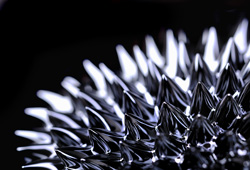Scientists fail to develop biosensors based on silicate nanoparticles
EU-funded scientists have failed in their bid to develop quantitative biosensors based on silicate nanoparticles, citing problems with the dye that should have improved the ability to detect a targeted chemical constituent. However, the 'Development of robust and quantitative biosensors based on near-infrared two-dyed silicate nanoparticles' (Nirnanobiosens) researchers claim that despite disappointing results, their study has nonetheless furthered research in this area. The researchers set out to produce near-infrared ratio-metric sensors based on silicate nanoparticles in the range of 50 nanometres to 200 nanometres in diameter. Such nanosensors are based on core-shell concept designs. The core is made from a spherical silicate in which a reference near-infrared dye is embedded that is inert towards the targeted chemical constituent as well as any potential interfering species. A sensing shell is then built up around this core, either through surface immobilisation of an indicator dye or by secondary growth of a silicate shell which embeds the indicator dye. In this case, the Nirnanobiosens research team synthesised a pH-sensitive boron-dipyrromethene (BODIPY) dye, which it said 'gave promising results as a sensor in solution'. However, the scientists acknowledged that 'unfortunately, we were not able to obtain the compound in a satisfactory purity and attempts to prepare core-shell pH-nano-sensors with the crude product were unsuccessful'. They added that 'in parallel, near-infrared cyanine dye derivative … was synthesised', but 'again, product purification was difficult to perform properly and the compound could not be recovered as pure as expected'. The Nirnanobiosens team concluded that even though the project was 'not accomplished to the best expectations … the results obtained provide a proof of concept towards near-infrared nanosensors'. They said that 'complementary studies might be relevant to reach the initially planned scientific objectives, and beyond, to harvest the fruits of the resulting socioeconomic impact'.







